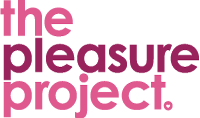|
Exercise |
Pleasure Lifeline |
|
Synopsis |
This is a self-reflection exercise, allowing participants to look back into their lives and examine when they became conscious of pleasure in general and sexual pleasure in particular. |
|
Objective |
To increase sensitivity and understanding of how participants’ own experiences of pleasure and sex can affect their own attitudes and values and their responses to others. |
|
Approximate Time
|
75 Minutes |
|
Materials Needed |
Paper and pens for each participant |
|
Steps |
Ask participants to think about their favourite meal. They don’t have to tell anyone about it but rather just enjoy the memory of it. What about a favourite sound? Smell? Explain to participants that if we are to be able to talk successfully about sexual pleasure, it can be useful to explore our experiences of pleasure. Ask participants to choose their partner for this exercise now, so that when the time comes, they can go into pairs with minimum disruption to other participants. The person they choose should be someone with whom they feel comfortable to share some personal material. Ask participants to find a place in the room where they feel comfortable and can focus on the exercise without distraction. If the room allows for it they may want to lie down on the floor. They should relax and listen to your voice. Allow a few minutes for this. Explain the following: “Imagine yourself in a place where you feel completely relaxed and safe. There is a photograph album of your life. Inside the album on each page there is a different picture of you at different stages of your life. The first page is a photo of you as a baby. On the next, you as a toddler, then as you turn the pages there Is you starting primary school, secondary school, beginning puberty, becoming a young adult, and finally as you are now. Look at these photos and think about yourself at each of these ages. Think about different senses – taste – touch – hearing – smell – looking and how these give you pleasure as a baby? As an infant? As an older child? At puberty? As a young adult? As you are now? Now, think now about sex…when did you first become aware of yourself as a sexual person? When did you first feel sexual pleasure? What did it feel like? And now, how does it feel to be a sexual person? What makes you feel sexy? What makes you feel good about yourself as a sexual person?” When you have finished, they should take time to draw or write on their paper whatever has come into their mind. This may be in words, pictures or diagrams. Allow 15-20 minutes for this. They should then get together with their partner. It is important that they divide the next 30 minutes equally between them. This is not a conversation. One of them will be talking and the other listening. They will then change roles. Processing: It may be most appropriate to process the exercise in support pairs or groups, paying attention to the experience of the exercise and the learning from it. It may be useful for the trainer to begin the processing by drawing attention to the fact that change IS possible, and to ask participants to consider the messages they would like to give to their clients or those over whom they have influence e.g. their own children. Ask participants:
|
|
Tips for trainers |
Such an exercise could lead to bad memories surfacing as well. Before going into the workshop, try and arrange contact with a support group or counsellor who can help people that may have experienced sexual or other violence. Before launching into the exercise, clarify that while you may not be trained to help participants deal with negative emotions, you can point them to somebody who they can talk to. |
Don’t forget to leave us a comment about your experience with this exercise!
